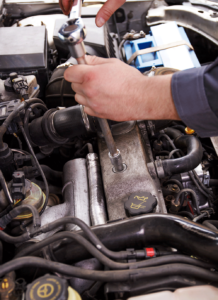A gasket is a mechanical seal. These seals allow for the mating of two surfaces that have irregularities, like an engine block and a cylinder head. Throughout your vehicle, many gaskets keep fluid transfer from being exposed to the outside world. Gaskets also maintain a high level of compression, and when the compression inside of the cylinder causes a hole in the gasket, this is called a blown gasket. The main problem with gaskets is that they will eventually wear out and fail over many years. The plus is that installing gaskets is relatively easy, but the ones that often break are extremely difficult to replace. Perhaps the most important gasket in your car is the head gasket. This gasket sits inside the vehicle’s engine and seals the space between the engine block and the cylinder head. Without this seal in place, the engine would lose compression and leak fluids, which can lead to ruining the entire engine.

Know if there is a Broken Gasket
Since a blown head gasket can cause damage and force major repairs, it is very important to regularly check for the signs of a failing gasket. While this is true for any and all gaskets in your vehicle, the head gasket is the worst possible gasket to break, and therefore, the most important. If your car is consistently overheating or losing coolant, it could very well be a serious problem with your head gasket. In addition, if during your usual car maintenance and fluid checks your dipstick has froth on it, it could represent coolants being mixed in with your oil due to a head gasket problem.
Replacing a Broken Gasket
Under no circumstances should you consider replacing a head gasket. Replacing the head gasket involves removing the exhaust and intake manifold, valve train, and finally the head itself. While this may not sound very involved, it means disconnecting an array of sensors and completely unhooking the ignition system. After checking the head gasket, it has to be replaced perfectly, each bolt reattached in the correct order. This is all assuming that the blown gasket did not damage the engine, as that would necessitate engine repair that are even more involved and complex. Realistically, if you know little enough to even ask for directions on replacing a broken gasket, you should bring your vehicle in.
Maintenance for the Gasket on your vehicle
After having your head gasket replaced, oftentimes, it is not the end of the line for your bad luck. In order to keep the new head gasket working properly, it needs to be re-torqued after a short amount of driving, post replacement. You can bring the vehicle in and we can do this for you. If you ever start to notice there is something out of the norm with your vehicle, make sure to bring it in as soon as possible, so that we can inspect it for you. This way you can have a safe and reliable vehicle when you drive.
Recent Comments